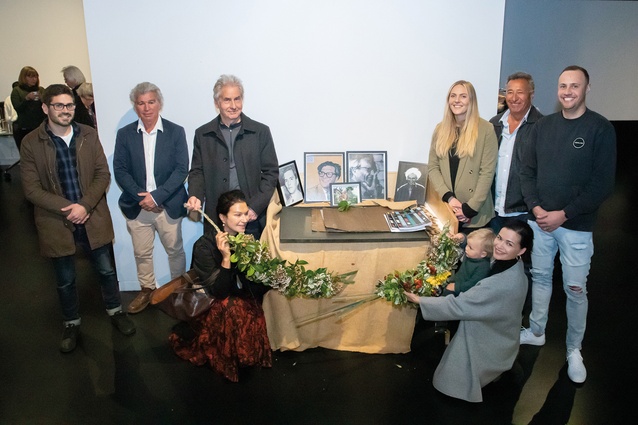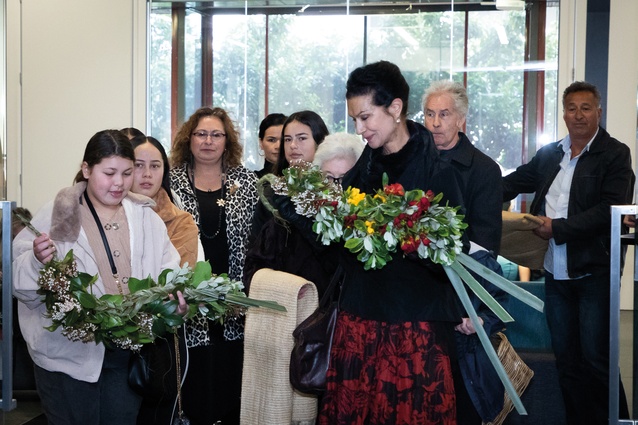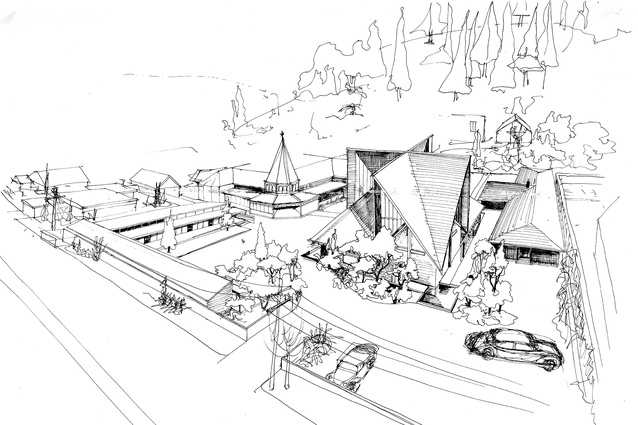Significant John Scott drawings gifted to library
An estimated 7000 drawings belonging to renowned architect John Scott are now archived at the Alexander Turnbull Library. Futuna Trust chair and architect Nick Bevin charts the events that led to the generous gifting of this drawing taonga by the Scott whānau.
On a blustery afternoon in early September, a white van backed into the dock-way at the Alexander Turnbull Library in Wellington. The van had travelled from Haumoana in Hawke’s Bay. At the wheel was Jacob Scott, eldest son of architect John Scott, accompanied by his brother Adam. In the van were 67 A1 AGFA photographic paper boxes: 50 red, 12 green and five yellow. In the boxes lay upwards of 7000 original drawings by John Scott and his staff, covering all his projects (more than 200) over the years of his architectural practice. Each box was marked with the names of the projects it housed.
It was during Queen’s Birthday weekend in 2018 that I first saw the archive and inspected the contents of one of the boxes, along with fellow Futuna trustee Elizabeth Cox. At least five different types of paper and drawing film were used by Scott, in both complete sheets and scraps, inscribed with pencil and ink. It was a treasure trove of drawn information, from preliminary design sketches to final working drawings and everything in between.
What followed was a series of meetings and negotiations between Chris Szekely and Oliver Stead from the Alexander Turnbull Library, the Scott whānau and the Futuna Trust, after which a mutually agreed deed of gift was signed.
The 67 boxes of drawings were shifted to Te Awanga Community Hall in March 2020, during lockdown. All were opened and their contents inspected by Scott family members Jacob, Hana and Ema, and library staff members Catherine Bisley, Margaret Morris and John Sullivan. Errant drawings were returned to the right boxes and a full catalogue checked and confirmed. This process was made easier by the fact that Scott’s wife Joan had worked on the files following his death in 1992. She had created an index and reintegrated piles of loose plans in the office in the appropriate boxes. In addition to the boxes of drawings, there was a suitcase full of specifications and structural calculations for every project.
Back to Friday, 11 September 2020. The van’s rear doors were opened and the 67 boxes were formally greeted and welcomed with a waiata from the library and a response led by Ema Scott. The pōwhiri continued with a karakia sung over the boxes before they were unloaded. Once they were inside the foyer of the National Library, a second pōwhiri was held for the Scott whānau and supporters. Photos of John Scott were distributed by the family members and a black A1 box of original drawings of the McPhail House was carried into the hui room on the call from the library kuia and placed on display.
After speeches of welcome and acknowledgments, Ema Scott sang a waiata. Later, small groups were taken on back-of-house tours of the library and shown the long row of black-steel A1 drawers ready to house the Scott collection of drawings.
“The Alexander Turnbull Library is required to protect, preserve, develop and make accessible its collections in accordance with their status as documentary heritage and taonga,” says Szekely. “When we met with representatives from the Futuna Trust to discuss their proposal to fund-raise for the preservation and digitisation of the Scott archive, we undertook to provide the trustees with technical information that would support their proposal. One thing led to another and the conversation between the whānau and the library became about the possibility of depositing the archive directly with the Turnbull. The archive will be described, preserved and digitised within three years.”
The Scott whānau says that transferring Scott’s drawings to their ‘forever home’ at the National Library is very special recognition of their father and his life’s work. “There’s a saying: ‘Ko te ringa tangata i hanga i te whare, engari ko te tuarā o te whare i hanga i te tangata’ (the people build the house and the house builds the people) and we are sure JC would be loving that this is what’s happening,” says Jacob Scott. “He once said that all he really wanted was ‘to be relevant in his own time’, and he surely achieved that, but we’re especially proud that both he and his work have such a special place in our history and in the histories of Aotearoa and Te Ao.”
“We were never alone in this process,” adds Ema Scott. “We were guided, cajoled, inspired and encouraged in this endeavour. We felt aided by our tīpuna all the way. Our father’s mahi needed to be protected, valued and made available for others to learn from. It needed to be in the Alexander Turnbull Library.”
Ema says the whānau had three tangi for their father: “one for his tinana (body), another for his ngākau (heart) and the third when the Alexander Turnbull Library whānau gave us a pōwhiri to welcome our Dad’s intellectual property to be entombed (so to speak) in the library. Some of us might say that this body of work represents his soul.”













